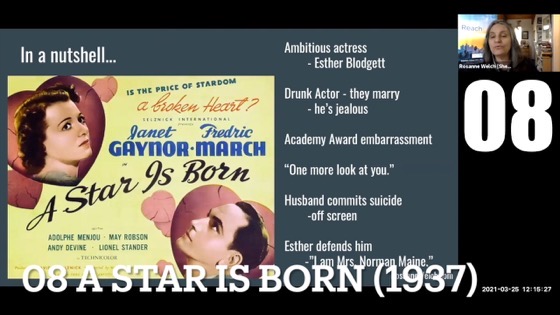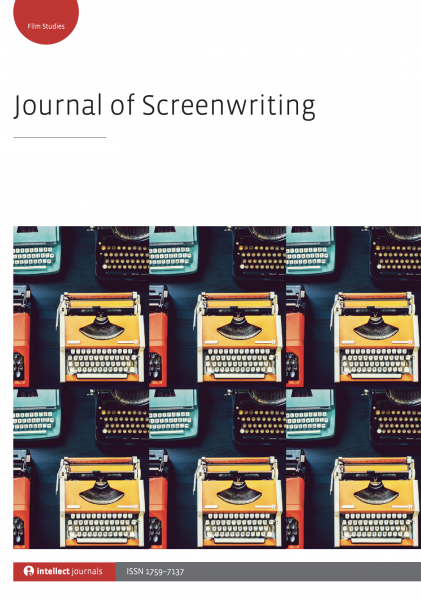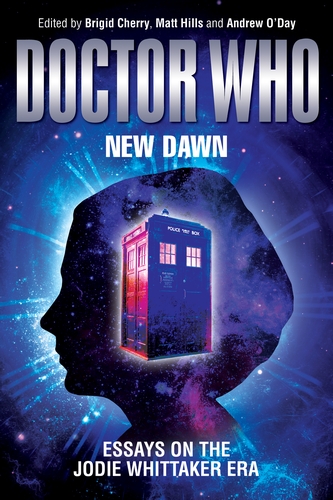Transcript:
In a nutshell, what do we see in the first version of A Star Is Born?” We have this ambitious actress. We have a drunken actor, not a director. They do marry and he is jealous of her despite how bad that makes him feel. We have this classic scene where she wins an Academy Award and he shows up drunk and destroys and humiliates the evening right? We have this classic line “Can I have one more look at you”, right before I kill myself but you don’t know that’s what I’m about to do right? We have the husband committing suicide off-screen. We’re going to see him walk off into the ocean. We’re not going to see him dead on our screen and of course, we’re going to have this ending where she defends him to the society that destroyed him — to Hollywood — by saying “I am Mrs. Norman Maine” and there’s a lot — we’ll talk about this a little if we have some time — there’s some argument. My undergrad students nowadays will say they hate that line and they’re seeing it as her stepping back and losing her identity and I don’t think that’s how it was intended. I think if we think again about the time period, this was her asserting this man meant something and you people ruined him and I will not forget him right? So it’s an interesting line to see. Everything changes as we move through society and we bring our own baggage to what we watch. So we have to think about that. It was intended to be a monument to him and not a detriment to her at this point.
Watch this entire presentation
Connections at conferences matter! Through the most recent SCMS, I met Vicki Callahan, whose film history focus right now is on Mabel Normand. When she learned I could put together a lecture on the importance of the female voice in the A Star is Born franchise she asked me to give that lecture to her master students.
It made for a great opportunity for me to hone the ideas I’m working on for a chapter on that franchise that I’m writing for a new book from Bloomsbury: The Bloomsbury Handbook Of International Screenplay Theory. It’s always nice when one piece of research can be purposed in other ways – and it’s always fun revisiting such a female-centric film franchise – one that drew the talents of such powerful performers as Janet Gaynor, Judy Garland, Barbara Streisand, and Lady Gaga.
Find out why in this lecture!

Podcast: Play in new window | Download
Subscribe: RSS



![The Difficulties and Delicacies of Writing the First Female Doctor in 50+ years (Complete) [Video]](https://rosannewelch.com/wp-content/uploads/2021/10/SD-Who-Con-Chibnall-2021-001.jpg)
![13 Fuller and Her Relationships from Concord Days: Margaret Fuller in Italy [Video]](https://rosannewelch.com/wp-content/uploads/2021/10/rmw-concord-day-2021-fuller-rome-13.jpg)
![07 More On Dorothy Parker from “Female Creatives & A Star Is Born” [Video]](https://rosannewelch.com/wp-content/uploads/2021/10/rmw-women-creatives-star-is-born-usc-07.jpg)

![12 Fuller and Garibaldi from Concord Days: Margaret Fuller in Italy [Video]](https://rosannewelch.com/wp-content/uploads/2021/10/rmw-concord-day-2021-fuller-rome-12.jpg)


![06 Dorothy Parker from “Female Creatives & A Star Is Born” [Video]](https://rosannewelch.com/wp-content/uploads/2021/10/rmw-women-creatives-star-is-born-usc-06.jpg)